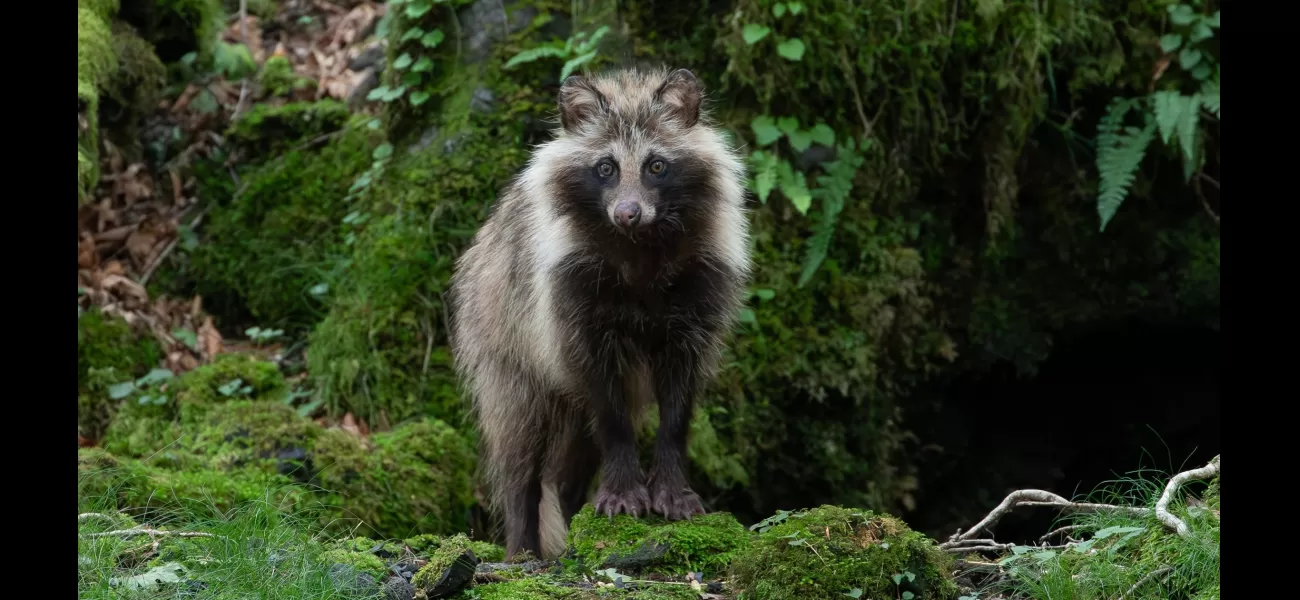Tokyo sees rise in raccoon population, causing them to become a problem by damaging crops.
In the 70s, anime fans rushed to buy raccoons as pets.
May 19th 2024.

Japan has been facing a major issue with the increasing number of racoons in the country. These animals were originally brought over as pets, but now they have become an invasive species causing chaos in Tokyo and other parts of the country. The impact of these racoons is especially felt in the rural areas of Tokyo, where they are causing extensive damage to crops.
In 2012, the authorities trapped 259 racoons, but just 10 years later, the number rose to a staggering 1,282, according to Kyodo News. The farm ministry reported that in 2022, the damage caused to crops amounted to 450 million yen, affecting not only fruits and vegetables but also livestock. This has become a major concern for the agricultural sector in Japan.
Racoons are originally native to North America, but they were brought to Japan in the late 1970s due to the popularity of the anime, Rascal the Raccoon. The anime was based on an autobiographical novel called "Rascal: A Memoir of a Better Era" by Sterling North, where he writes about raising a baby racoon named Rascal. At one point, more than 1,500 racoons were being imported to Japan every year, as reported by Smithsonian Magazine.
However, the Japanese government soon realized the negative impact of these animals and banned their importation and keeping them as pets. But by then, it was too late. Many pet owners found out the hard way that racoons are not easy pets to take care of, with their tendency to bite and create chaos at home. As a result, many of them were released into the wild, while others escaped on their own.
With no natural predators in Japan, the racoon population grew rapidly, and today they can be found in all 47 prefectures of the country, as reported by Kyodo News. The local councils in Tokyo have tried to control their numbers by setting up traps, but these measures have proven to be ineffective. According to an official from one municipality, the traps are sometimes broken by the desperate racoons, and only a small fraction of them are caught, making it difficult to estimate their overall range.
Japan is not the only country struggling with invasive racoons. Germany also faced a similar issue after the animals were brought over for their fur in the 1930s. Last year, there were several reports of racoons causing trouble across the country, breaking into people's homes and gardens, and even getting drunk on beer. These incidents show the destructive nature of these animals and the need for effective measures to control their population. Japan and other countries facing this problem must work together to find a solution and protect their ecosystems from further damage.
In 2012, the authorities trapped 259 racoons, but just 10 years later, the number rose to a staggering 1,282, according to Kyodo News. The farm ministry reported that in 2022, the damage caused to crops amounted to 450 million yen, affecting not only fruits and vegetables but also livestock. This has become a major concern for the agricultural sector in Japan.
Racoons are originally native to North America, but they were brought to Japan in the late 1970s due to the popularity of the anime, Rascal the Raccoon. The anime was based on an autobiographical novel called "Rascal: A Memoir of a Better Era" by Sterling North, where he writes about raising a baby racoon named Rascal. At one point, more than 1,500 racoons were being imported to Japan every year, as reported by Smithsonian Magazine.
However, the Japanese government soon realized the negative impact of these animals and banned their importation and keeping them as pets. But by then, it was too late. Many pet owners found out the hard way that racoons are not easy pets to take care of, with their tendency to bite and create chaos at home. As a result, many of them were released into the wild, while others escaped on their own.
With no natural predators in Japan, the racoon population grew rapidly, and today they can be found in all 47 prefectures of the country, as reported by Kyodo News. The local councils in Tokyo have tried to control their numbers by setting up traps, but these measures have proven to be ineffective. According to an official from one municipality, the traps are sometimes broken by the desperate racoons, and only a small fraction of them are caught, making it difficult to estimate their overall range.
Japan is not the only country struggling with invasive racoons. Germany also faced a similar issue after the animals were brought over for their fur in the 1930s. Last year, there were several reports of racoons causing trouble across the country, breaking into people's homes and gardens, and even getting drunk on beer. These incidents show the destructive nature of these animals and the need for effective measures to control their population. Japan and other countries facing this problem must work together to find a solution and protect their ecosystems from further damage.
[This article has been trending online recently and has been generated with AI. Your feed is customized.]
[Generative AI is experimental.]
0
0
Submit Comment





